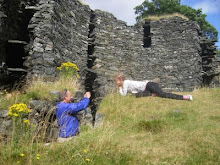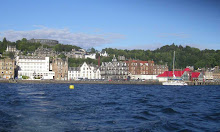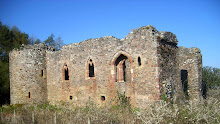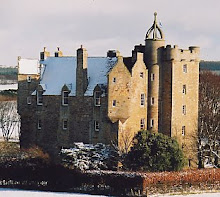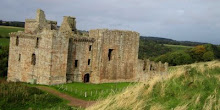Like Glencoe, Hermitage is best seen in foul weather to reflect all that has occurred in that remote place. The castle was once owned by a Baron de Soules, a noted warlock, who had been told that only a rope of sand could destroy him. However local people created a belt of lead into which sand was poured and, thus restrained, he was boiled in oil in a vast cauldron up on Ninestane Rig, a local stone circle.

The sun came out just long enough to allow this photograph and provide respite to reflect on the arrival here in October 1566 of the 24 year old Mary Queen of Scots. She had given birth to the future James VI of Scotland (James I of England) only four months earlier and so the 46 mile round trip from Jedburgh was perhaps ill advised. James Hepburn, fourth Earl of Bothwell, was her host during the two hour visit. Bothwell, Lieutenant of the Marches in Scotland, had recently been wounded by a notorious reiver known as 'Wee Jock Elliot of the Park'. Next year Mary and Bothwell would be married. So whether it was the lieutenant or the wounded man that she was so keen to visit is an ongoing debate, but the weather was unpredictable as ever, and Mary's horse became stuck in a mire. On arrival back at Jedburgh Mary fell ill, suffering convulsions and losing both speech and sight.
Were it not for her French physician who bandaged her limbs, massaged her, and poured wine down her throat, the funeral, already being planned by the Earl of Moray would have proceeded. She is said to have remarked later in her troubled life, "Would that I had died in Jedburgh".
The house where she lodged in Jedburgh is open to the public.











































